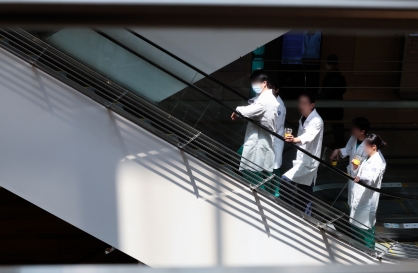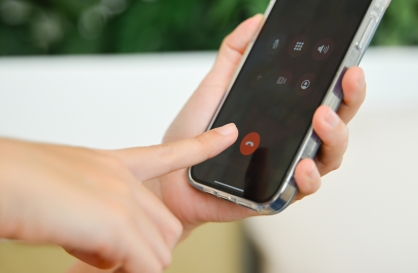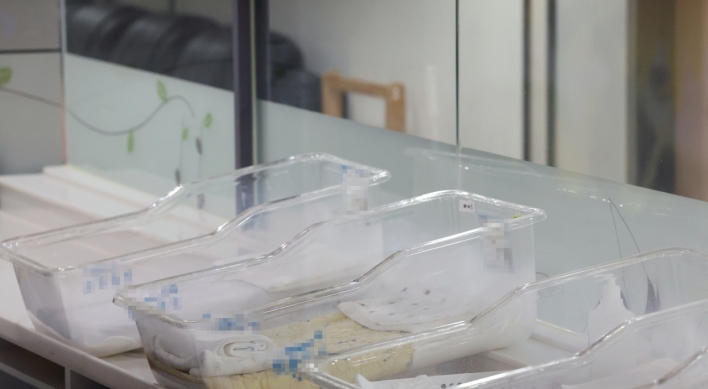Beyond just lighting
Smart bulbs have added functions, like playing music
By Park Hyung-kiPublished : Nov. 5, 2014 - 20:48
Would you be willing to pony up $15 for an ultraefficient light-emitting diode bulb, especially if these so-called smart bulbs also played music and served as a home fire-detection and security system?
This year has been a challenging one for the leading suppliers of lighting products, with quarterly lamp and luminaire revenues falling for most traditional technology suppliers. Many LED suppliers hope to reverse their fortunes as they strive to attract new customers to pay a premium by offering smart bulbs with new features that may surprise and delight potential buyers.
The first wave of smart bulbs, which began selling in earnest in 2009, enabled consumers to turn their lights on or off, or even change the bulb’s color via a smartphone or tablet. Examples of these products include the Philips Hue and the Insteon LED bulbs. But it is the second wave, which started to make an impact early this year, that is drawing new interest by incorporating additional functionality in unexpected combinations.
At present, this extra functionality has taken the form of a speaker, security camera or smoke detector built into the bulb, but applications may go in any number of directions in the future. Current examples include the MiPow Playbulb and AwoX StriimLIGHT, both of which incorporate a Bluetooth smart speaker so that the bulb combines light and music capabilities ― and all controllable from a Bluetooth device like a smartphone.
The logic behind LED speaker lightbulbs is to make full use of often underutilized power sockets in the home reserved just for lighting. There are 44 light sockets on average in each Western European and North American home, and by incorporating a speaker, consumers can easily add a simple sound system to every room.
Despite these benefits, many consumers have yet to be won over by adding intelligence to their lighting. In some cases the requirement to lose their light switch is seen as an inconvenience or a disruption to comfortable, traditional routines ― such as consumers personally turning on the light switch when they get home. To overcome this type of resistance or objection, Philips earlier in the year announced the introduction of a wireless and batteryless switch as an add-on to the Hue range of its products.
Approximately 880,000 connected LED smart bulbs ― or smart bulbs with and without the added functionality described above ― shipped globally in 2013. With new products entering the market seemingly every week, sales are forecast to ramp up very quickly in the next few years, with shipments to surge to more than 11 million units in 2018.

Price remains the largest factor inhibiting growth in the connected smart bulb market. In an IHS Teardown conducted last year of four LED bulbs, the bill of materials for nonconnected bulbs came to about $15. Adding connectivity could likely add another $5 per bulb.
Earlier in the summer GE announced that a smart bulb would retail for no less than $15. In the coming years, however, IHS expects significant price pressure will occur as both the general cost of LEDs and the cost of adding connectivity to LED lamps decline.
But the question remains: Would you pay a small premium to make the lighting in your home just a little bit smarter?
This year has been a challenging one for the leading suppliers of lighting products, with quarterly lamp and luminaire revenues falling for most traditional technology suppliers. Many LED suppliers hope to reverse their fortunes as they strive to attract new customers to pay a premium by offering smart bulbs with new features that may surprise and delight potential buyers.
The first wave of smart bulbs, which began selling in earnest in 2009, enabled consumers to turn their lights on or off, or even change the bulb’s color via a smartphone or tablet. Examples of these products include the Philips Hue and the Insteon LED bulbs. But it is the second wave, which started to make an impact early this year, that is drawing new interest by incorporating additional functionality in unexpected combinations.
At present, this extra functionality has taken the form of a speaker, security camera or smoke detector built into the bulb, but applications may go in any number of directions in the future. Current examples include the MiPow Playbulb and AwoX StriimLIGHT, both of which incorporate a Bluetooth smart speaker so that the bulb combines light and music capabilities ― and all controllable from a Bluetooth device like a smartphone.
The logic behind LED speaker lightbulbs is to make full use of often underutilized power sockets in the home reserved just for lighting. There are 44 light sockets on average in each Western European and North American home, and by incorporating a speaker, consumers can easily add a simple sound system to every room.
Despite these benefits, many consumers have yet to be won over by adding intelligence to their lighting. In some cases the requirement to lose their light switch is seen as an inconvenience or a disruption to comfortable, traditional routines ― such as consumers personally turning on the light switch when they get home. To overcome this type of resistance or objection, Philips earlier in the year announced the introduction of a wireless and batteryless switch as an add-on to the Hue range of its products.
Approximately 880,000 connected LED smart bulbs ― or smart bulbs with and without the added functionality described above ― shipped globally in 2013. With new products entering the market seemingly every week, sales are forecast to ramp up very quickly in the next few years, with shipments to surge to more than 11 million units in 2018.

Price remains the largest factor inhibiting growth in the connected smart bulb market. In an IHS Teardown conducted last year of four LED bulbs, the bill of materials for nonconnected bulbs came to about $15. Adding connectivity could likely add another $5 per bulb.
Earlier in the summer GE announced that a smart bulb would retail for no less than $15. In the coming years, however, IHS expects significant price pressure will occur as both the general cost of LEDs and the cost of adding connectivity to LED lamps decline.
But the question remains: Would you pay a small premium to make the lighting in your home just a little bit smarter?

By William Rhodes
William Rhodes is a manager of the IHS lighting and LEDs group. Rhodes heads an international team of analysts researching the LED, OLED, lamps and luminaires markets. ― Ed.




![[Weekender] Korean psyche untangled: Musok](http://res.heraldm.com/phpwas/restmb_idxmake.php?idx=644&simg=/content/image/2024/05/02/20240502050841_0.jpg&u=)



![[Eye Interview] 'If you live to 100, you might as well be happy,' says 88-year-old bestselling essayist](http://res.heraldm.com/phpwas/restmb_idxmake.php?idx=644&simg=/content/image/2024/05/03/20240503050674_0.jpg&u=)








![[Herald Interview] Director of 'Goodbye Earth' aimed to ask how we would face apocalypse](http://res.heraldm.com/phpwas/restmb_idxmake.php?idx=652&simg=/content/image/2024/05/03/20240503050732_0.jpg&u=)
